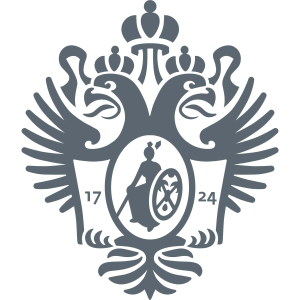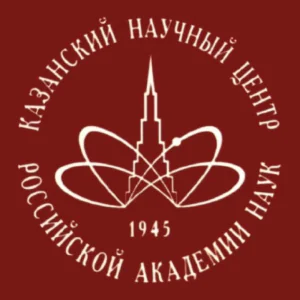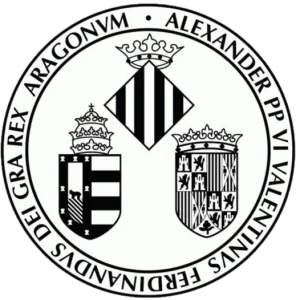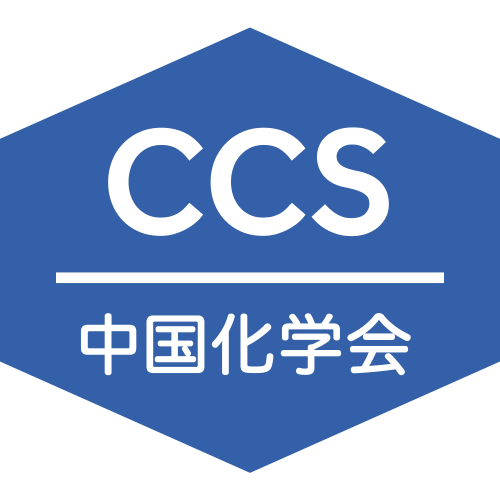Synthetic Applications of Proton-Coupled Electron Transfer.
Publication type: Journal Article
Publication date: 2016-07-29
scimago Q1
wos Q1
SJR: 5.433
CiteScore: 30.7
Impact factor: 17.7
ISSN: 00014842, 15204898
PubMed ID:
27472068
General Chemistry
General Medicine
Abstract
Redox events in which an electron and proton are exchanged in a concerted elementary step are commonly referred to as proton-coupled electron transfers (PCETs). PCETs are known to operate in numerous important biological redox processes, as well as recent inorganic technologies for small molecule activation. These studies suggest that PCET catalysis might also function as a general mode of substrate activation in organic synthesis. Over the past three years, our group has worked to advance this hypothesis and to demonstrate the synthetic utility of PCET through the development of novel catalytic radical chemistries. The central aim of these efforts has been to demonstrate the ability of PCET to homolytically activate a wide variety of common organic functional groups that are energetically inaccessible using known molecular H atom transfer catalysts. To do so, we made use of a simple formalism first introduced by Mayer and co-workers that allowed us to predict the thermodynamic capacity of any oxidant/base or reductant/acid pair to formally add or remove H· from a given substrate. With this insight, we were able to rationally select catalyst combinations thermodynamically competent to homolyze the extraordinarily strong E-H σ-bonds found in many common protic functional groups (BDFEs > 100 kcal/mol) or to form unusually weak bonds to hydrogen via the reductive action of common organic π-systems (BDFEs < 35 kcal/mol). These ideas were reduced to practice through the development of new catalyst systems for reductive PCET activations of ketones and oxidative PCET activation of amide N-H bonds to directly furnish reactive ketyl and amidyl radicals, respectively. In both systems, the reaction outcomes were found to be successfully predicted using the effective bond strength formalism, suggesting that these simple thermochemical considerations can provide useful and actionable insights into PCET reaction design. The ability of PCET catalysis to control enantioselectivity in free radical processes has also been established. Specifically, multisite PCET requires the formation of a pre-equilibrium hydrogen bond between the substrate and a proton donor/acceptor prior to charge transfer. We recognized that these H-bond interfaces persist following the PCET event, resulting in the formation of noncovalent complexes of the nascent radical intermediates. When chiral proton donors/acceptors are employed, this association can provide a basis for asymmetric induction in subsequent bond-forming steps. We discuss our efforts to capitalize on this understanding via the development of a catalytic protocol for enantioselective aza-pinacol cyclizations. Lastly, we highlight an alternative PCET mechanism that exploits the ability of redox-active metals to homolytically weaken the bonds in coordinated ligands, enabling nominally strong bonds (BDFEs ∼ 100 kcal) to be abstracted by weak H atom acceptors with concomitant oxidation of the metal center. This "soft homolysis" mechanism enables the generation of metalated intermediates from protic substrates under completely neutral conditions. The first example of this form of catalysis is presented in the context of a catalytic C-N bond forming reaction jointly mediated by bulky titanocene complexes and the stable nitroxyl radical TEMPO.
Found
Nothing found, try to update filter.
Found
Nothing found, try to update filter.
Top-30
Journals
|
10
20
30
40
50
60
|
|
|
Organic Letters
52 publications, 7.68%
|
|
|
Angewandte Chemie - International Edition
52 publications, 7.68%
|
|
|
Journal of the American Chemical Society
51 publications, 7.53%
|
|
|
Angewandte Chemie
51 publications, 7.53%
|
|
|
ACS Catalysis
32 publications, 4.73%
|
|
|
Chemistry - A European Journal
32 publications, 4.73%
|
|
|
Journal of Organic Chemistry
27 publications, 3.99%
|
|
|
Chemical Science
23 publications, 3.4%
|
|
|
Organic Chemistry Frontiers
20 publications, 2.95%
|
|
|
Chemical Communications
17 publications, 2.51%
|
|
|
Nature Communications
16 publications, 2.36%
|
|
|
Chemical Reviews
15 publications, 2.22%
|
|
|
Advanced Synthesis and Catalysis
13 publications, 1.92%
|
|
|
European Journal of Organic Chemistry
11 publications, 1.62%
|
|
|
Green Chemistry
11 publications, 1.62%
|
|
|
Organic and Biomolecular Chemistry
10 publications, 1.48%
|
|
|
Inorganic Chemistry
9 publications, 1.33%
|
|
|
ChemCatChem
9 publications, 1.33%
|
|
|
Dalton Transactions
8 publications, 1.18%
|
|
|
Synthesis
7 publications, 1.03%
|
|
|
Chemical Society Reviews
7 publications, 1.03%
|
|
|
Science China Chemistry
6 publications, 0.89%
|
|
|
Accounts of Chemical Research
6 publications, 0.89%
|
|
|
Chem Catalysis
5 publications, 0.74%
|
|
|
Tetrahedron Letters
5 publications, 0.74%
|
|
|
Chem
5 publications, 0.74%
|
|
|
Asian Journal of Organic Chemistry
5 publications, 0.74%
|
|
|
Beilstein Journal of Organic Chemistry
4 publications, 0.59%
|
|
|
Journal of Photochemistry and Photobiology A: Chemistry
4 publications, 0.59%
|
|
|
10
20
30
40
50
60
|
Publishers
|
50
100
150
200
250
|
|
|
American Chemical Society (ACS)
221 publications, 32.64%
|
|
|
Wiley
218 publications, 32.2%
|
|
|
Royal Society of Chemistry (RSC)
106 publications, 15.66%
|
|
|
Elsevier
52 publications, 7.68%
|
|
|
Springer Nature
31 publications, 4.58%
|
|
|
Georg Thieme Verlag KG
11 publications, 1.62%
|
|
|
MDPI
9 publications, 1.33%
|
|
|
Oxford University Press
5 publications, 0.74%
|
|
|
Beilstein-Institut
4 publications, 0.59%
|
|
|
AIP Publishing
4 publications, 0.59%
|
|
|
Shanghai Institute of Organic Chemistry
3 publications, 0.44%
|
|
|
Proceedings of the National Academy of Sciences (PNAS)
3 publications, 0.44%
|
|
|
Autonomous Non-profit Organization Editorial Board of the journal Uspekhi Khimii
2 publications, 0.3%
|
|
|
Canadian Science Publishing
1 publication, 0.15%
|
|
|
Chinese Chemical Society
1 publication, 0.15%
|
|
|
The Society of Synthetic Organic Chemistry, Japan
1 publication, 0.15%
|
|
|
Walter de Gruyter
1 publication, 0.15%
|
|
|
American Association for the Advancement of Science (AAAS)
1 publication, 0.15%
|
|
|
Research Square Platform LLC
1 publication, 0.15%
|
|
|
50
100
150
200
250
|
- We do not take into account publications without a DOI.
- Statistics recalculated weekly.
Are you a researcher?
Create a profile to get free access to personal recommendations for colleagues and new articles.
Metrics
677
Total citations:
677
Citations from 2024:
153
(22%)
Cite this
GOST |
RIS |
BibTex |
MLA
Cite this
GOST
Copy
Gentry E., KNOWLES R. P. Synthetic Applications of Proton-Coupled Electron Transfer. // Accounts of Chemical Research. 2016. Vol. 49. No. 8. pp. 1546-1556.
GOST all authors (up to 50)
Copy
Gentry E., KNOWLES R. P. Synthetic Applications of Proton-Coupled Electron Transfer. // Accounts of Chemical Research. 2016. Vol. 49. No. 8. pp. 1546-1556.
Cite this
RIS
Copy
TY - JOUR
DO - 10.1021/acs.accounts.6b00272
UR - https://doi.org/10.1021/acs.accounts.6b00272
TI - Synthetic Applications of Proton-Coupled Electron Transfer.
T2 - Accounts of Chemical Research
AU - Gentry, Emily
AU - KNOWLES, ROBERT P.
PY - 2016
DA - 2016/07/29
PB - American Chemical Society (ACS)
SP - 1546-1556
IS - 8
VL - 49
PMID - 27472068
SN - 0001-4842
SN - 1520-4898
ER -
Cite this
BibTex (up to 50 authors)
Copy
@article{2016_Gentry,
author = {Emily Gentry and ROBERT P. KNOWLES},
title = {Synthetic Applications of Proton-Coupled Electron Transfer.},
journal = {Accounts of Chemical Research},
year = {2016},
volume = {49},
publisher = {American Chemical Society (ACS)},
month = {jul},
url = {https://doi.org/10.1021/acs.accounts.6b00272},
number = {8},
pages = {1546--1556},
doi = {10.1021/acs.accounts.6b00272}
}
Cite this
MLA
Copy
Gentry, Emily, and ROBERT P. KNOWLES. “Synthetic Applications of Proton-Coupled Electron Transfer..” Accounts of Chemical Research, vol. 49, no. 8, Jul. 2016, pp. 1546-1556. https://doi.org/10.1021/acs.accounts.6b00272.






































